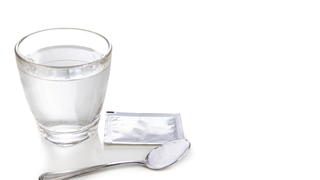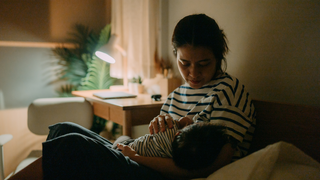Why Awareness Matters
You may feel SIDS is rare or unlikely, but awareness is key because prevention is possible. By making small, consistent changes in how your baby sleeps, feeds, and interacts with their environment, you can significantly reduce risks. These changes are safe, cost-effective, and easy to adapt to daily routines.Safe Sleeping Position
The way your baby sleeps is one of the strongest factors linked to SIDS.- Always place your baby on their back for sleep.
- Side and stomach positions increase the risk.
- Keep the head uncovered and clear of pillows or heavy bedding.
- Ensure the mattress is firm and flat, not soft or inclined.
Creating a Safe Sleep Space
The sleeping space matters as much as the position. Focus on a clutter-free, breathable environment.- Use a firm mattress that fits tightly into the cot or cradle.
- Avoid soft toys, pillows, or thick blankets inside.
- Ensure no loose bedding covers the baby’s face.
- Keep the cot close to your bed for monitoring, but avoid bed-sharing.
- Maintain good air circulation by using a fan or opening windows, but keep the baby away from direct drafts.
Controlling Room Temperature
Overheating is another factor connected with SIDS. Babies cannot regulate body temperature as well as adults.- Keep the room cool and comfortable, ideally at a temperature of around 24–26°C.
- Dress your baby in light cotton clothing, suitable for Indian climates.
- Avoid heavy blankets or overdressing.
- Check by touching the baby’s chest or back, not hands or feet, which may naturally feel cooler.
Feeding Practices That Help
Feeding is more than just nutrition. It also lowers SIDS risk.- Breastfeeding is strongly linked to reduced chances of SIDS. It improves immunity and sleep regulation.
- Offer breast milk exclusively for the first six months, as recommended by the Indian Academy of Paediatrics.
- Avoid introducing honey, cow’s milk, or solids before six months.
- If breastfeeding is not possible, ensure clean feeding practices and proper burping.
Pacifiers and SIDS Risk
Research suggests that pacifier use during sleep may lower the risk of SIDS, although the reason is unclear.- If you choose to use one, introduce it only after breastfeeding is well established.
- Do not force the pacifier if your baby rejects it.
- Avoid attaching it with strings or clips to prevent strangulation hazards.
Avoiding Smoke and Pollutants
Exposure to smoke and pollutants poses a significant risk. Babies exposed to tobacco smoke are more vulnerable to SIDS.- Keep the home smoke-free, both during pregnancy and after birth.
- Discourage visitors from smoking near the baby.
- Minimise the use of incense sticks or mosquito coils around the baby’s sleep area, as they release fine particles.
Regular Health Check-Ups
Routine health monitoring can catch developmental concerns early.- Attend all vaccination schedules as advised by your doctor.
- Consult promptly if you notice breathing difficulties or irregular sleep patterns.
- Share family health history with your paediatrician to identify potential vulnerabilities.
Practical Everyday Tips
Incorporating prevention into daily routines makes it easier:- Establish a consistent bedtime routine to help your baby sleep calmly.
- Keep the cot close to your bed for easier observation.
- Use light muslin sheets if covering is needed, tucked under the arms and below the chest.
- Share SIDS prevention practices with grandparents and caregivers, especially in joint families.
Emotional Aspect for Parents
It is natural to feel anxious about SIDS. However, remember you are not alone. Awareness itself is empowering. By making conscious choices, you are actively protecting your baby. Instead of fear, let prevention become a positive daily practice of care, comfort, and bonding.Sudden Infant Death Syndrome may sound overwhelming, but you can take meaningful steps to reduce risks. Safe sleeping positions, clutter-free cots, proper room temperature, smoke-free surroundings, and regular health practices make a significant difference.
Every choice you make adds to your baby’s safety. Awareness and consistency are your strongest tools. By blending traditional care with modern knowledge, you can provide not only protection but also a peaceful and nurturing environment for your baby.
Whether you’re pregnant, a new mom, or navigating postpartum, you don’t have to do it alone. Join our support group to connect, share, and support one another.
FAQs on Protecting Your Baby: Reducing the Risk of Sudden Infant Death Syndrome (SIDS)
- Can SIDS be completely prevented?
No. The exact cause remains unknown. However, following safe sleep and care practices greatly lowers the risks. - Is SIDS common in India?
Data is limited, and many cases go unreported. However, risk factors like unsafe sleeping and smoke exposure exist in Indian households, making awareness important. - Does vaccination help reduce SIDS risk?
Yes. Studies suggest that timely vaccinations protect against infections that may lower the chances of SIDS. - Can room-sharing with the baby help?
Yes. Room-sharing allows you to monitor your baby closely while keeping them in their own safe sleeping space. - What should I do if my baby rolls over during sleep?
If your baby rolls independently, let them stay. Continue placing them on their back at the start of sleep and ensure the cot remains clear of hazards.






